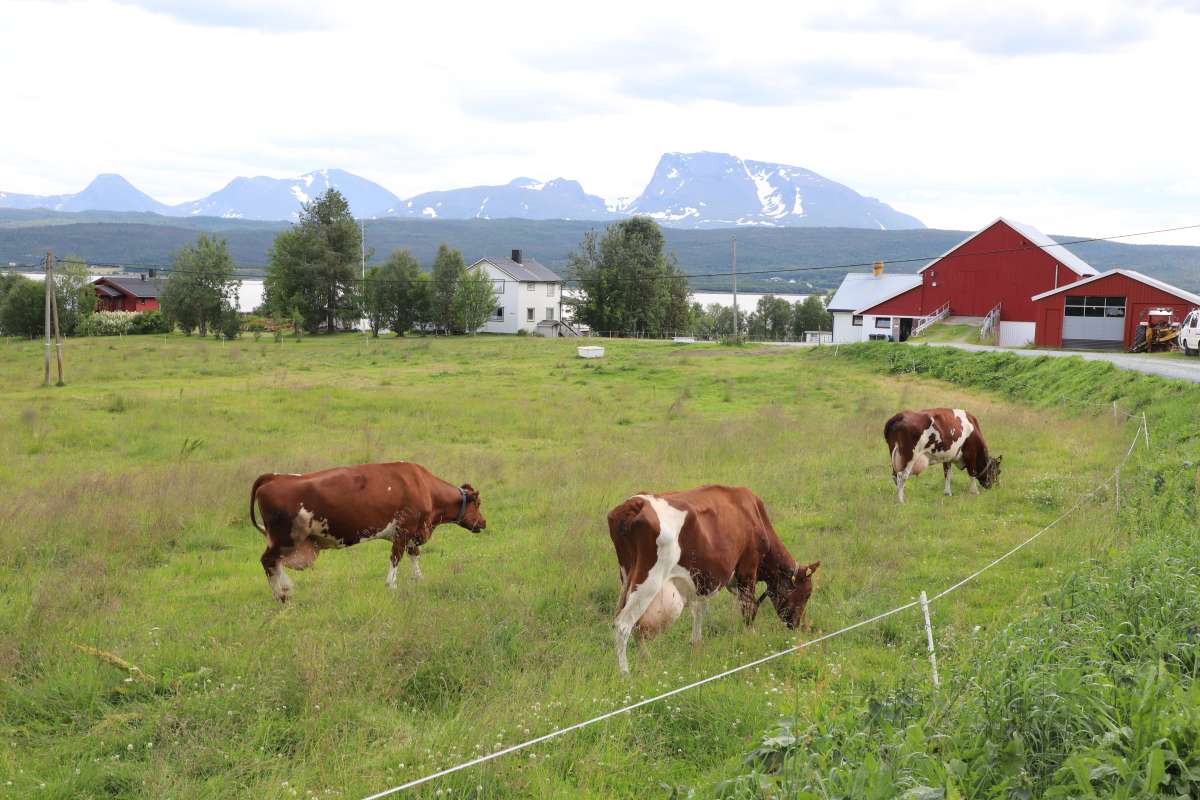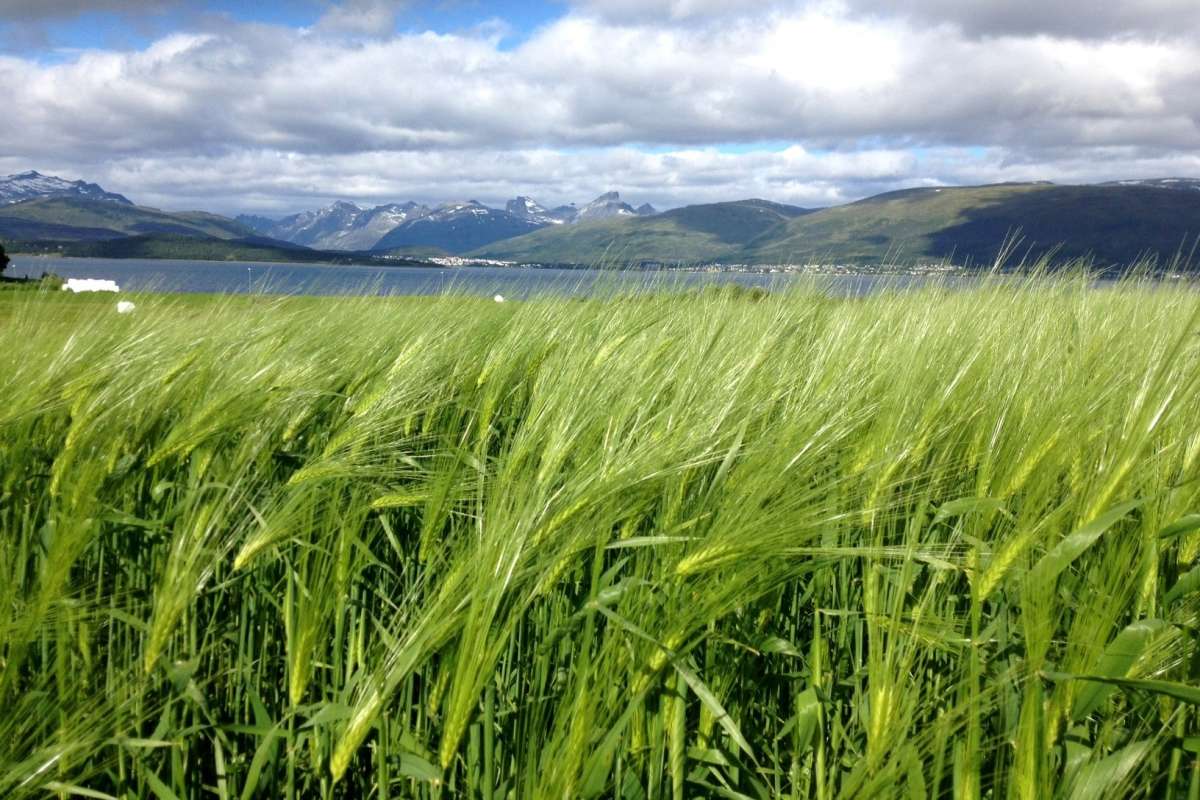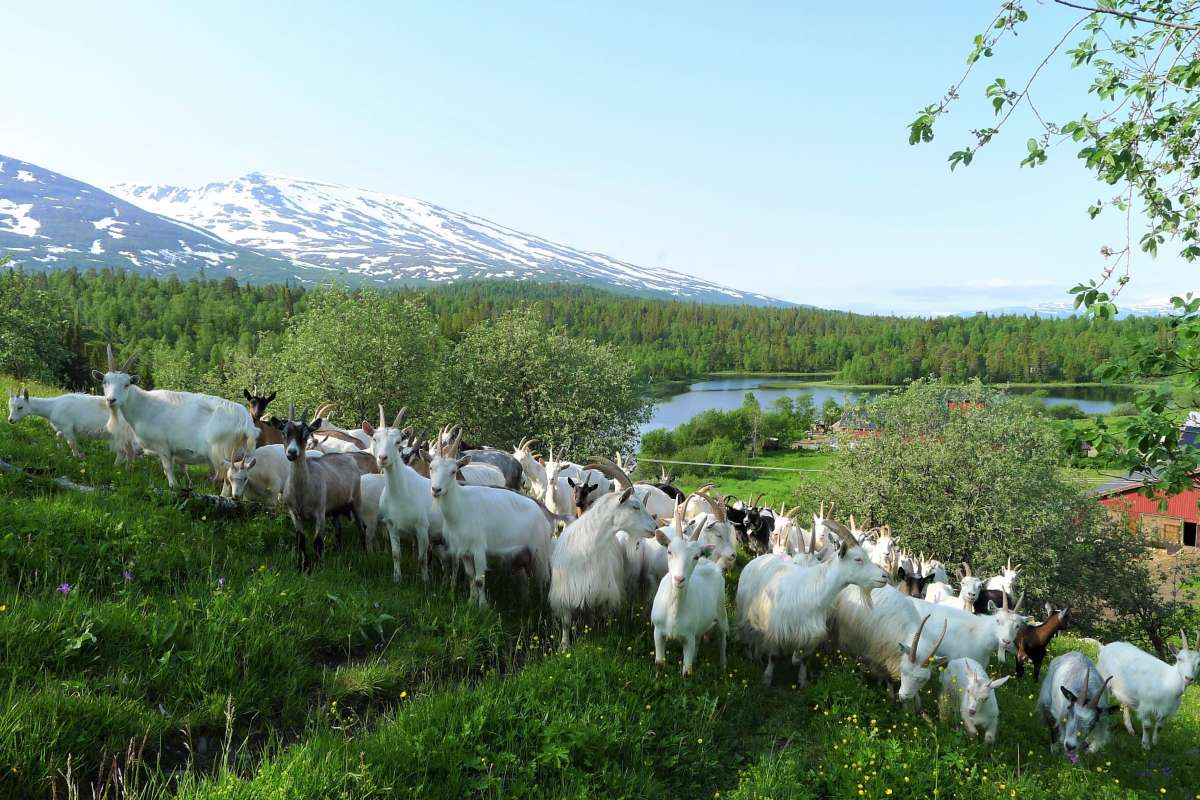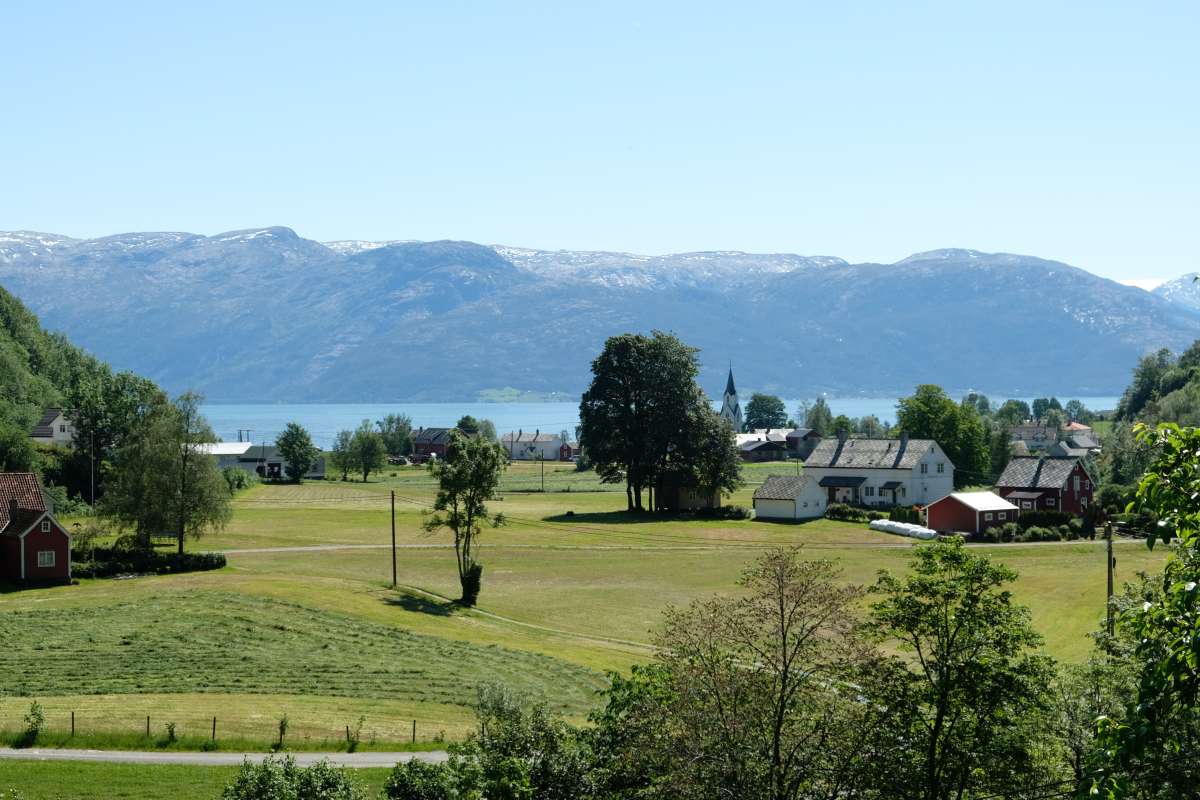New tools to predict winter stress in grassland
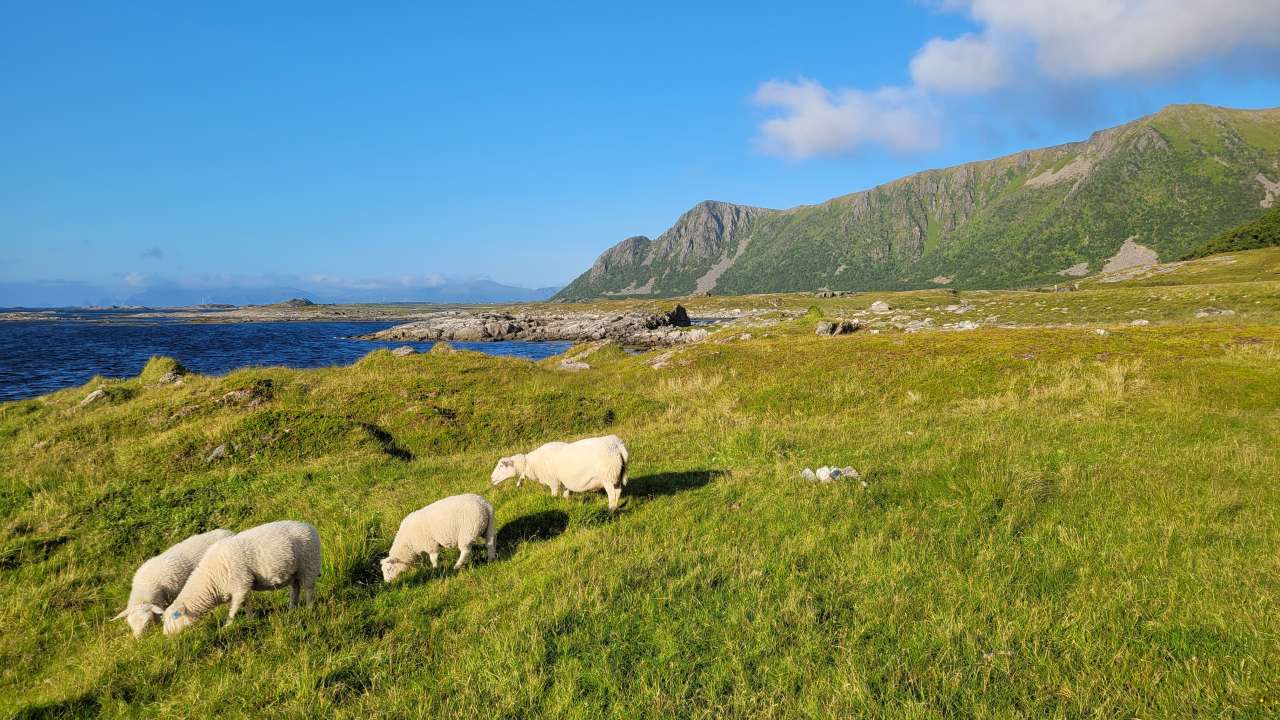
Sheep grazing on Andøya in Nordland. Climate change, with warmer and more unstable weather, has introduced new and greater challenges in forage production. Photo: Morten Günther
Variable and unfavourable winter conditions often cause damage and yield loss in grasslands in Northern Norway and other regions with long winters. Now, researchers are combining high-tech tools, models and ground registrations to predict winter survival and yields in grasslands in the region.
Grasslands form the basis for fodder production for ruminants in large parts of the world, including Norway and Poland. However, climate change, with warmer and more unstable weather, have introduced new and greater challenges in forage production.
Variable winter weather and unstable snow conditions increase the risk of bare frost or prolonged ice cover on the ground, resulting in significant yield losses in grasslands, especially in northern and mountainous regions. Prolonged droughts and abnormally high summer temperatures are also increasingly problematic in many regions. In Poland, this has caused significant yield losses in grasslands, particularly on drought-prone soils.
In the project Tools for information to farmers on grasslands yields under stressed conditions to support management practices (GrasSAT), researchers from the Norwegian Institute of Bioeconomy Research (NIBIO) and NORCE Norwegian Research Centre have worked together with Poland’s Institute of Geodesy and Cartography and Poznań University of Life Sciences to adapt and combine high-tech tools such as remote sensing from satellites or drones, ground registrations, and process-based models.
In northern Norway, farmers and advisors from the Norwegian Agricultural Advisory Service (Norsk landbruksrådgivning, NLR) have contributed by selecting representative observation sites, recording data on snow, soil frost, winter survival, and yield, and providing information about practices such as reseeding, cutting, and fertilization.
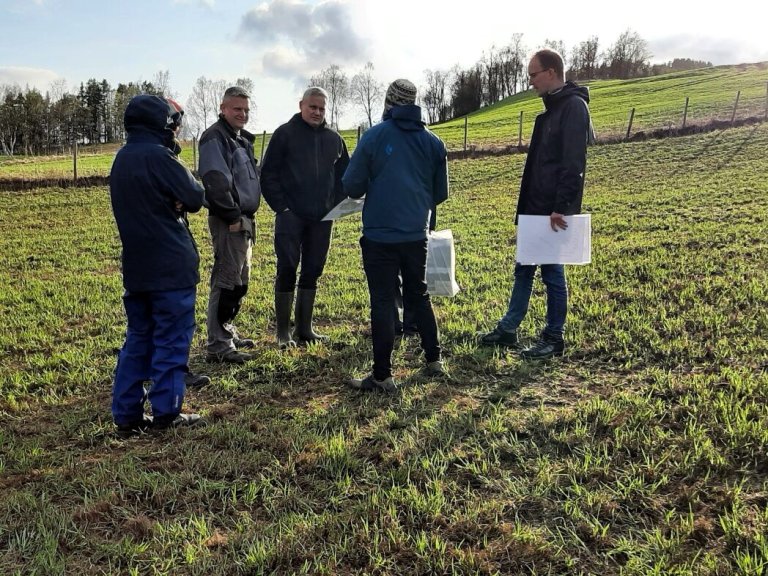
The challenges of long winters
The agriculture in the northern regions operates under challenging conditions with a short, intense growing season and a long winter. Weather conditions vary significantly from year to year and between regions and locations, and the winter can be challenging for perennial grasslands. Frost, ice, and fungal diseases during the winter can, in some years, result in significant yield losses, leading to a substantial economic burden for farmers.
“The background of this project is these difficult conditions for grass production in Northern Norway, as well as in Poland and other parts of the world. Winter stress causes great uncertainties for farmers”, confirms Tomas Persson, who leads the NIBIO part of the project.
Persson points out that with climate change, winter conditions are projected to be even less stable, for example regarding snow cover.
“The problem is that you do not know what you get. If the snow cover is less stable, or you have longer periods with cold weather with no snow cover, the plants will be exposed to much lower temperatures, than if they were covered with the insulating snow covert. Warm weather episodes during winter also increase the risk for the build-up of impermeable ice covering the grass fields. This is particularly detrimental for grassland and can cause significant winter kill.”
More unstable conditions can also mean more frequent events of low temperature early or late during the winter season when plants normally are less cold hardy than in the middle of the winter.
It is often challenging to predict winter damage and estimate the extent of the harm during the subsequent spring.
“Early warning of winter damage can help farmers plan measures in time to minimize losses. One aim of the project was to combine tools to get better prediction of the conditions in the spring. We wanted to predict the degree of winter stress and get better information for decision-making later,” Persson explains.
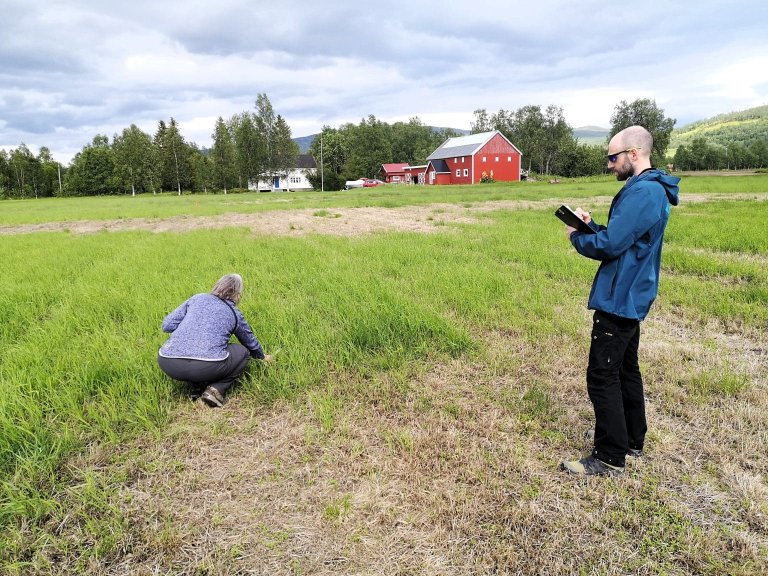
High tech tools
The researchers have combined different tools, such as satellite and drone images, and a process-based model (BASGRA) that simulate forage grass plant growth, and includes weather, soil and management data. This model can simulate the whole season - winter and summer - and predict winter kill incidents.
“It means you can get an early indication of the risk of winter kill. We have developed and adapted a system of tools for Northern Norway, and have tested different means of acquiring data, calibrated the BASGRA model by combining data from ground registration and remote sensing from different times of the year such as the ground coverage in autumn and early spring,” Persson explains.
“Comparison with field measurements, such as plant height, leaf area and yield, helps calibrate and validate the results from satellite data. Additionally, satellite data can be integrated into plant growth models to continually update the models with new information throughout the season,” Persson highlights.
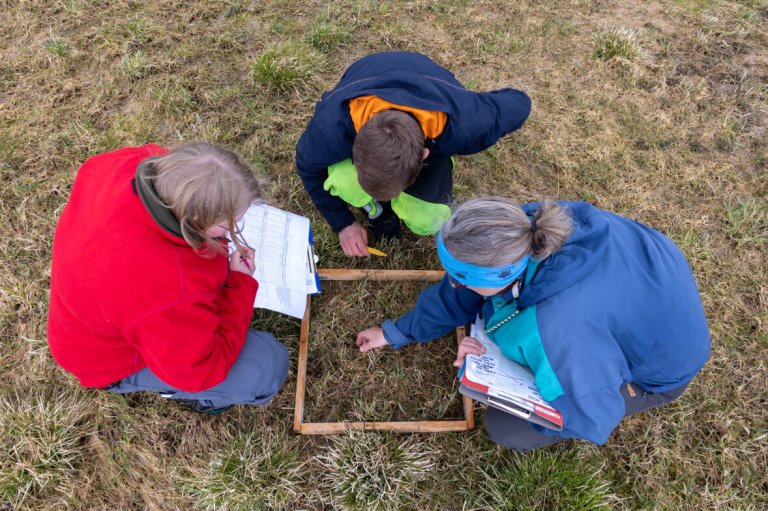
New for Northern Norway
So far, project results indicate that adaptations of the BASGRA model for conditions in Northern Norway regarding winter survival and growth can reduce prediction errors in crop (ground cover, growth patterns, yield) from up to 90% to approximately 20%.
Forecasting yield and quality during a cultivation season involves examining the effects of potential cultivation practices, such as fertilization, sowing and harvesting timing, in combination with weather and soil conditions. Additionally, it includes investigating potential long-term adaptations, considering factors such as climate change and the need for new varieties of crops.
Persson says combining these tools in research is new for this area of Norway.
“And to focus on the winter season is relatively new. Many are working in this field of research, combining remote sensing and satellite data and crop growth models, but there is more work done for drought and heat stress. However, you should not underestimate the impact of winter stress, which can also affect other regions than the high latitude regions”, the NIBIO-researcher underlines.

Useful for farmers and municipal administration
The research in the project has been carried out in collaboration with the NLR Northern Norway, which helped select representative pasture areas from farmers in five regions in Northern Norway: Nordreisa, Malangen, Målselv, Kvæfjord, and Sortland, with 4-5 pasture plots per region.
Advisor in NLR Northern Norway, Ragnhild Renna, has been involved in collecting ground data for the project.
“We have collected information on botanical composition, yield and made field registrations, she comments.”
Renna confirms that agriculture in the north of Norway is experiencing climate stress, and there is unpredictability concerning climate and weather.
“The information gathered in the project is highly valuable for considering the winter events and predicting the outcomes in spring. If technology can provide an advantage, and we avoid waiting for the snow to melt or temperatures to rise to see what the grassland conditions are, farmers can benefit”, she says.
Renna explains that when farmers have prior information on grassland conditions, they can do earlier repairs. This lessens the risks in terms of reduced yields and economic loss.
“This will benefit the process of procuring the necessary resources and calculating needs such as buying seed or avoiding buying fertilizer if alternative renewal measures are required. Knowing about the conditions beforehand will give the opportunity to assess both the extent and quantity of what is needed.”
“There's also the aspect of planning barnyard production with forage. Thinking ahead, for example planning to acquire more land could be another advantage”, she says.
Renna also believes municipalities could potentially use this tool for administrative purposes.
“They could benefit from being able to check for available land in planning, and in relation to compensation schemes for crop failure. Farmers bear the responsibility to report on potential crop failure as early as possible, but municipalities could contribute to assessments of potential outcomes”, she points out.
The agricultural advisor also says both the information on winter and summer stress is useful in the north:
“This growing season, we have both experienced winter stress, as well as drought stress such as in in Poland. The tool encompasses numerous elements that is proving useful for Norwegian farmers”, she concludes.
Contacts



Contacts


